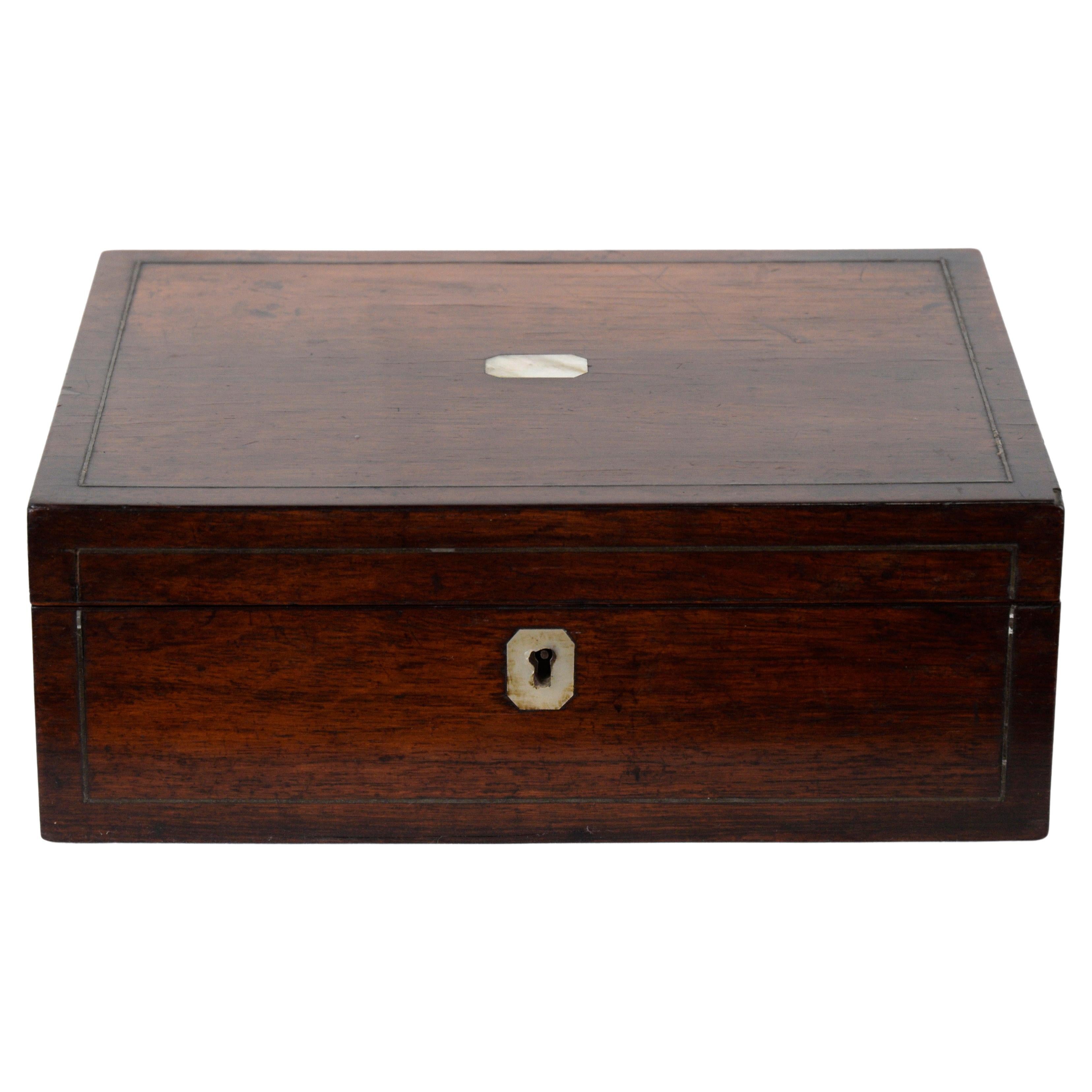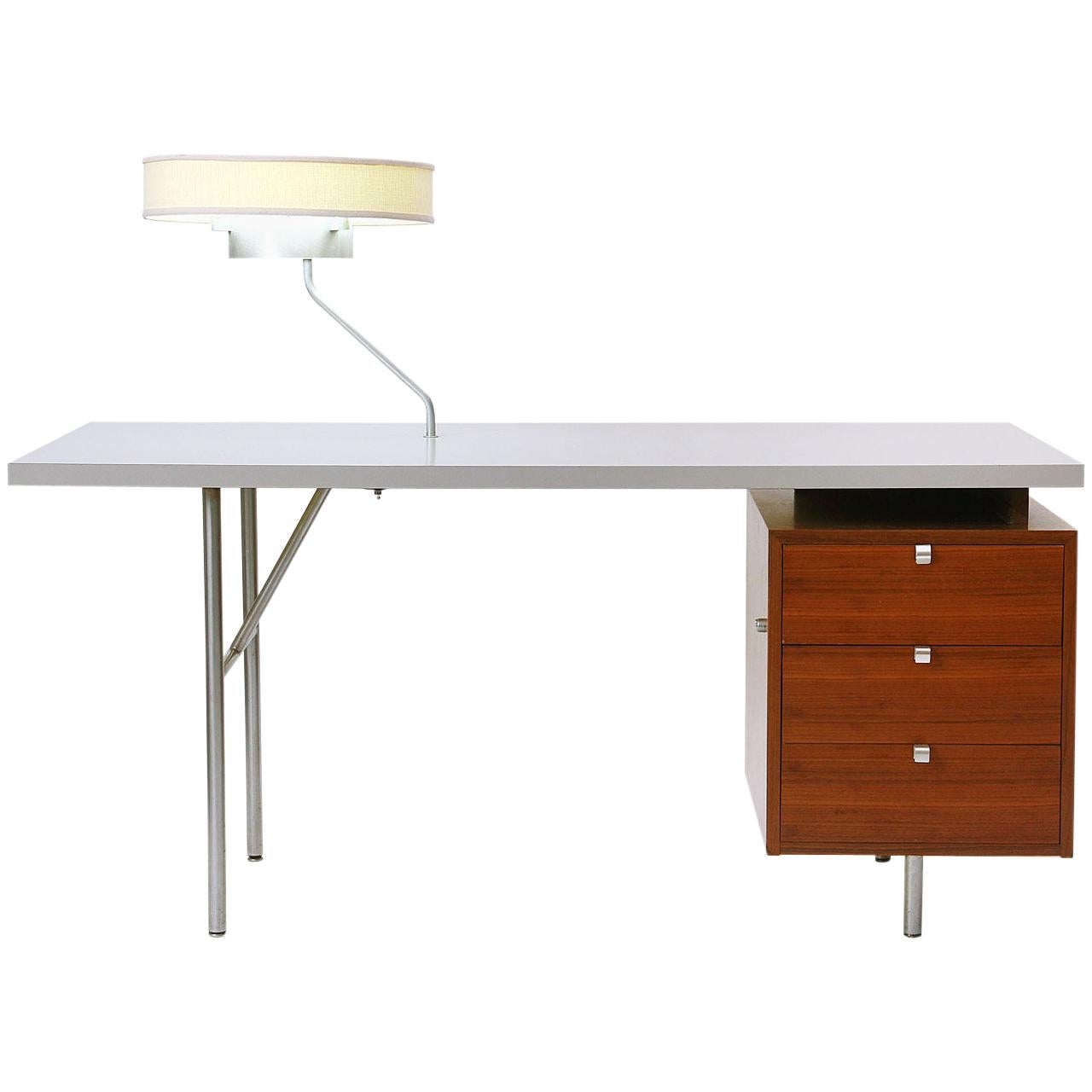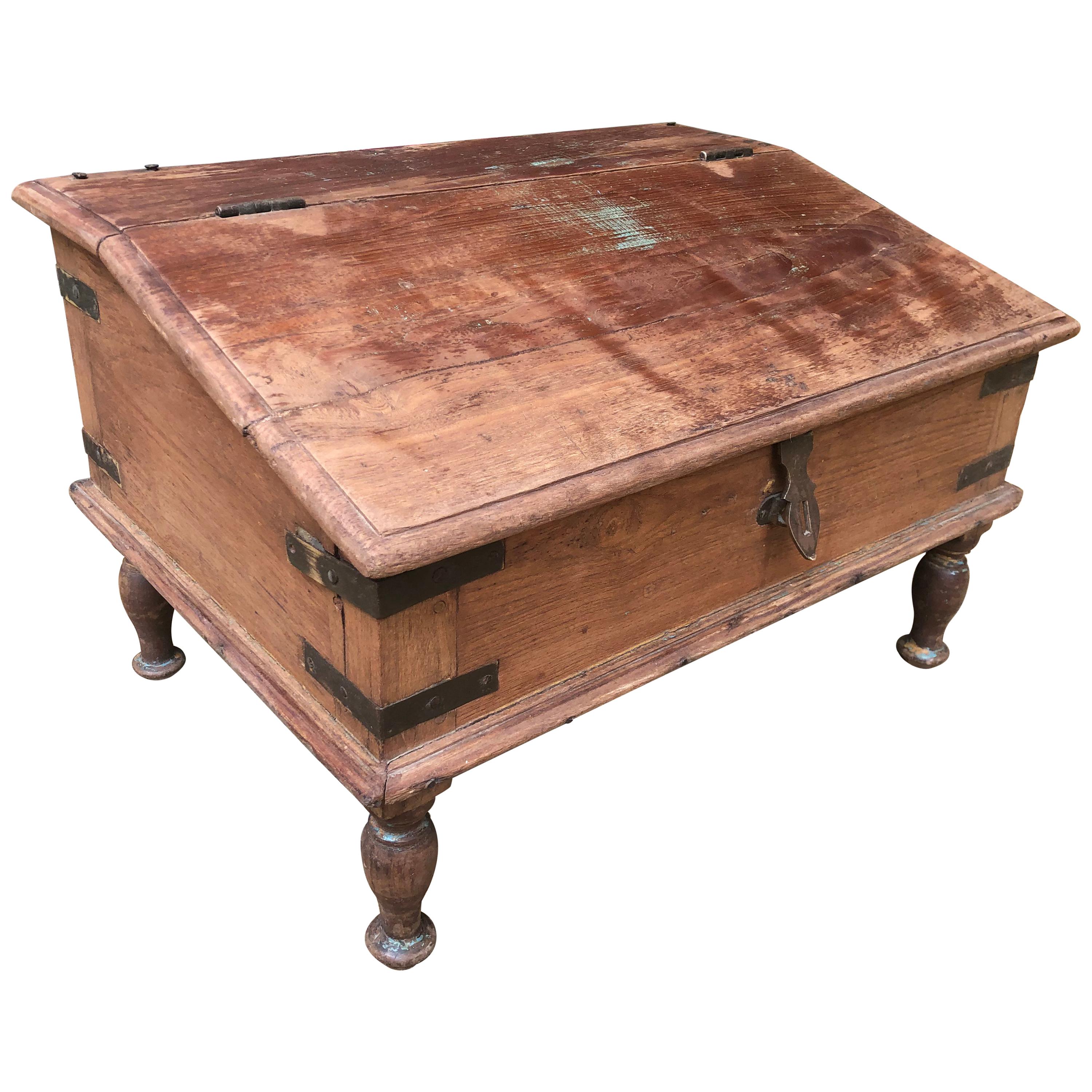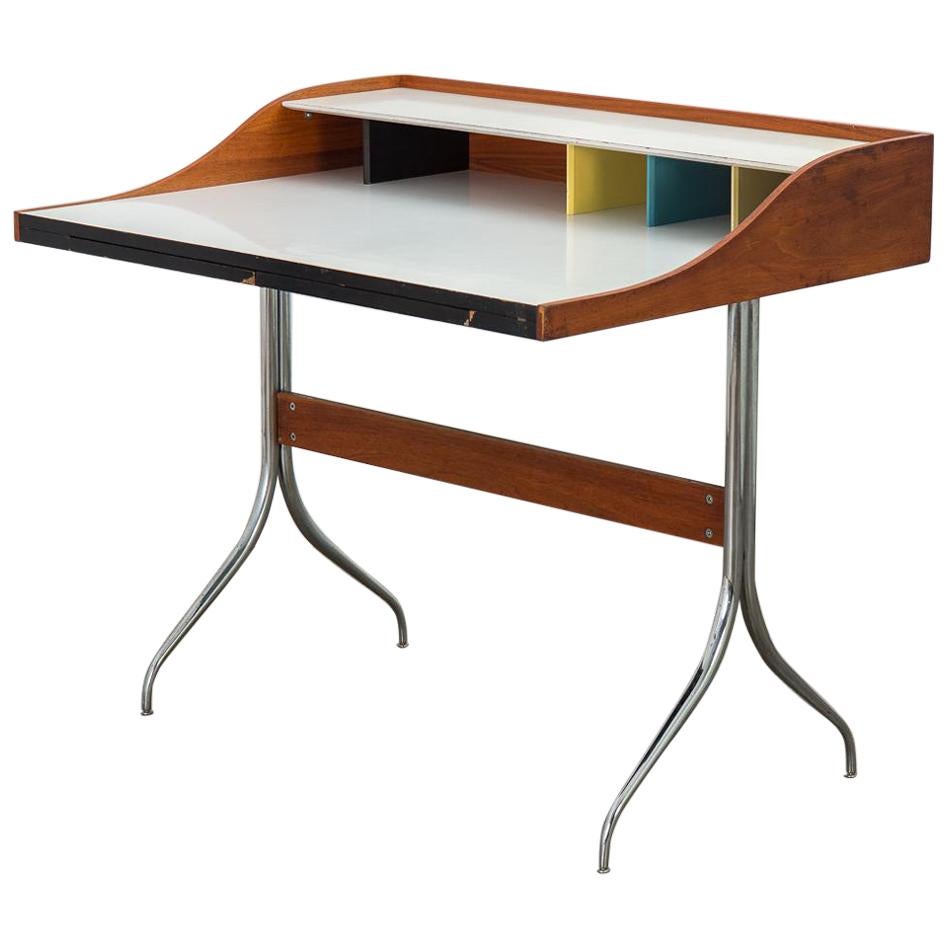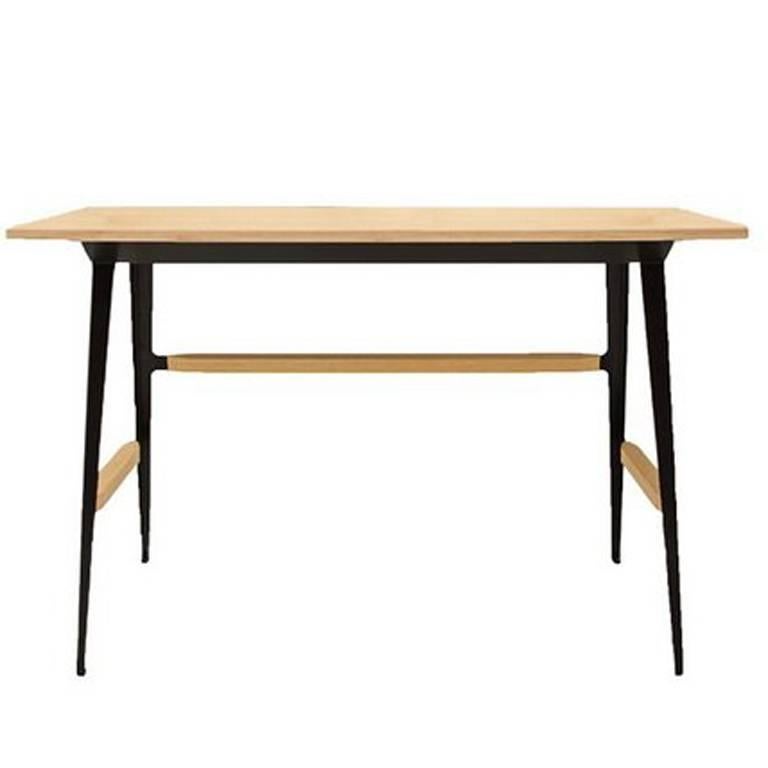Items Similar to Lord Nelson`s Family Portable Sloping Laptop Desk
Want more images or videos?
Request additional images or videos from the seller
1 of 7
Lord Nelson`s Family Portable Sloping Laptop Desk
About the Item
This desk was purchased by me at the closure of the Whitbread Archive Museum in 2001. It comes with their supplied provenance - together with several later lines of research.
Included with the sale of this desk are several items "said" to have come from HMS Victory. As with all items associated with Nelson one needs to exercise a fair degree of caution.
I have a number of Nelson pieces listed on 1st Dibs and I am open to offers on the entire collection.
I am grateful to Julian Homer Specialist on early oak boxes for his research and report on the Nelson Desk as follows:
>>>>
The desk has obviously had a very interesting history, although we only know about its provenance since 1758. There is a small brass commemorative plaque inset into the back of the desk which states “Presented to Rev. Edmund Nelson, The Parsonage House, Burnham Thorpe, Norfolk, by his Parishioners, 1758”. As this was the year of Horatio's birth, it was presumably a celebratory gift to Edmund on the birth of his son.
The desk was not new at this time, but had been around for about 100 years before then. It is, in fact, a nice example of a mid-17th century table box or desk. It is 17" long by 13.5" deep by 9.25" tall and on the smaller side of average for this type of desk. It has a rich brown colour with a good patina. As one would expect, it is in oak, the favoured wood for such items.
Distant relatives of this type of desk can be seen in 14th and 15th century manuscripts. Beautifully carved, inlaid and painted examples would have been in common use amongst the well off during the 16th century, whether they were for ecclesiastical or secular use. By the 17th century, when reading and writing was more prevalent within the household and the use of travelling scribes was on the wane, this type of writing desk must have been much more common. Most surviving examples encountered nowadays came from firmly within the 17th, century.
This example is fairly typical in that it has a carved front panel with an S scroll design. This design has been used in different forms over the years and can be interpreted in many ways by the carver's ingenuity.
There are partitions inside the desk to hold four drawers and a pen shelf on top. The pen shelf has a raised front to it, which is nailed in place with its four original faceted iron nails to stop pens, etc., rolling off into the box. The drawers are missing, but this is often the case.
The same punch, a 16-point tool, has been used sparingly on the front panels, too, along with a simple C punch.
The channelled moulding around the three sides of the base is original and was fixed with wooden dowels, as some evidence of these remain. The basic construction is nailed with the front panel rebated onto the carcass. The base and back are also original.
At some time in the desk's life, it has undergone a few minor modifications. I would suggest that these were carried out in two phases.
Although the desk was old at the time it was presented, the donors no doubt, would have liked to make their gift presentable. The desk has good quality hand-forged butterfly hinges but they are not the original ones, nor is the book rest at the bottom edge of the slope or the small similar moulding around three sides of the top.
It may well have still had its original hasp and lock as many survive today with these features. The original hasp and lock and key have been replaced with an ingenious wooden peg and latch device to close the lid firmly. The peg is fixed in a stationary position and the latch swivels to contain the peg.
Anyone with knowledge of hasps, locks and keys will know that they form a rather noisy, wobbly form of closure and as most keys are lost, without this the system is completely ineffective.
The second feature introduced is the flat panel which slides vertically into place at the front of the drawer spaces and shelf and is held in position by two swivelling lugs which slot into grooves cut into the sides of the desk.
Although some boxes do have the occasional sliding partition, it is usually not obvious, as its purpose was to cover up a hidden space for secrecy. This is obviously not the case here, but more than likely a preventative measure (as the drawers are missing) to stop the contents of the box rolling all over the place when travelling.
In its own right, this little desk is quite an interesting survival from the mid-17th century and, with its Nelson connections, fairly obviously established, it must be of quite some historical importance.
By J.P.J. Homer.
- Dimensions:Height: 9.25 in (23.5 cm)Width: 17 in (43.18 cm)Depth: 13.5 in (34.29 cm)
- Style:Georgian (Of the Period)
- Materials and Techniques:
- Place of Origin:
- Period:
- Date of Manufacture:1710
- Condition:Reupholstered. Replacements made: Hinges and hasp were replaced at some point. Wear consistent with age and use. The leather writing surface has likely to have been changed.
- Seller Location:Dorking, GB
- Reference Number:1stDibs: LU8802234858042
About the Seller
No Reviews Yet
Vetted Seller
These experienced sellers undergo a comprehensive evaluation by our team of in-house experts.
Established in 1963
1stDibs seller since 2023
- ShippingRetrieving quote...Ships From: Dorking, United Kingdom
- Return PolicyA return for this item may be initiated within 14 days of delivery.
More From This SellerView All
- Lord Nelson Commemorative Georgian Mahogany Longcase Grandfather ClockLocated in Dorking, GBThis Georgian Mahogany longcase clock was made in the Georgian period of about 1815. It is a chiming 8 day clock with golden feathered grain. It has an inlaid and crossbanded decor...Category
Antique Early 19th Century English Georgian Grandfather Clocks and Longc...
MaterialsBrass
- Writing Desk used by Charles Dickens, circa 1800Located in Dorking, GBThis is the desk on which Dickens began his famous writing career. He was in fact a solicitor’s clerk working from number 1 Raymond Buildings at Grays Inn, London. This is where this actual desk was used by Charles Dickens in 1827. The Charles Dickens desk is made of solid mahogany. It is a good quality standing clerk's desk. It was made in the Georgian period of about 1800. It has four fine turned legs, raised on brass castors. They are linked by an under tier, which was probably useful for storing the work in hand. It has a hand dovetailed single drawer with turned knob handles. The sloping leather top adjoins a flat galleried shelf...Category
Antique Early 19th Century Georgian Desks and Writing Tables
MaterialsMahogany
- Early Georgian Chippendale Bureau Bookcase Desk in Carved MahoganyBy Thomas ChippendaleLocated in Dorking, GBAn unusual and possibly unique example of a Chippendale design for a carved mahogany bureau bookcase. See included photos of scans of the designs from Chippendale’s - The Gentleman...Category
Antique Late 17th Century English Georgian Desks and Writing Tables
MaterialsMahogany, Oak
- Hon Stephen Tenant`s Writing DeskLocated in Dorking, GBThis superb and unusual pedestal writing desk was formerly owned and used by Stephen Tenant. It came from his home where he lived until his death in 1987 - being Wilsford Manor in Wi...Category
Antique Late 19th Century English Victorian Desks and Writing Tables
MaterialsMahogany
- Victorian Golden Oak Swivel Pedestal DeskBy James ShoolbredLocated in Dorking, GBThis unusual desk was made by the famous makers James Shoolbred and company. It bears several makers stamps to the interior drawers. The ingenious swivel design is operated b...Category
Antique 19th Century English Victorian Desks and Writing Tables
MaterialsLeather, Oak
- Large Solid Mahogany Victorian Gillows Serpentine Partners Desk, circa 1870By Gillows of Lancaster & LondonLocated in Dorking, GBThis superb shaped pedestal partners desk was made in the Victorian period of about 1870. It was made in the famous Gillows Cumbrian Workshop and the drawers and some of the locks ar...Category
Antique 19th Century English Victorian Desks and Writing Tables
MaterialsMahogany
You May Also Like
- Portable "Laptop" Desk with Storage Compartments and InkwellLocated in Soquel, CAPortable "Laptop" Desk with Storage Compartments and Inkwell Box with storage for paper, pens, ink, and other writing supplies. Multiple lids/compar...Category
Early 20th Century American American Classical Desks and Writing Tables
MaterialsMother-of-Pearl, Hardwood
- George Nelson Swaged-Leg deskLocated in Oosterbeek, NLGeorge Nelson desk model 5850 design 1954 for Herman miller special version with black legs one of the inside plastic drawer is missingCategory
Vintage 1950s American Desks and Writing Tables
MaterialsMetal
- Writing Desk by George NelsonBy George Nelson, Herman MillerLocated in Sagaponack, NYA single pedestal writing desk by George Nelson for Herman Miller with a built-in pivoting lamp. Lamp is 18" H.Category
Vintage 1950s American Mid-Century Modern Desks and Writing Tables
MaterialsSteel
- English Hard Wood Portable Writing Desk, circa 1850By OTHRLocated in Guadalajra, JalEnglish country portable writing desk with lifting writing surface, it has its original bronze ironworks, late 18th century.Category
Antique Late 18th Century Mexican Rustic Desks and Writing Tables
MaterialsHardwood
- 1950s George Nelson Swag Leg DeskBy George Nelson, Herman MillerLocated in Brooklyn, NYOriginal Swag leg desk, designed by George Nelson for Herman Miller. Colorful cubbyholes and molded drawers allow for a tidy and streamlined workspace. O...Category
Vintage 1950s American Mid-Century Modern Desks and Writing Tables
MaterialsWalnut
- "Moleskine" Portable Atelier Desk Designed by Philippe Nigro for DriadeBy Driade, Philippe NegroLocated in Brooklyn, NY"Moleskine" is a desk, designed by Philippe Nigro and manufactured by Driade, with a folding top in birch plywood and oak veneer. Matte black painted steel structure with cable flap....Category
21st Century and Contemporary Italian Modern Desks and Writing Tables
MaterialsSteel
Recently Viewed
View AllMore Ways To Browse
Antique Portable Writing Box
Antique Wooden Pen Box
Antique Portable Writing Table
Asian Carved Wooden Desks
Antique Javanese Cabinet
Asian Day Bed
Burmese Rattan Tables
Asian Painted Wedding Cabinets
Cloisonne Tile
Japanese Tea Chest
Chinese Polychrome Wedding
Mandalay Chest
Asian Roll Desk
Jumu Asian Furniture
Korean Abalone
Tatami Bed Base
Asian Carved Black Lacquer Desk
Console Cloud Solid Wood
